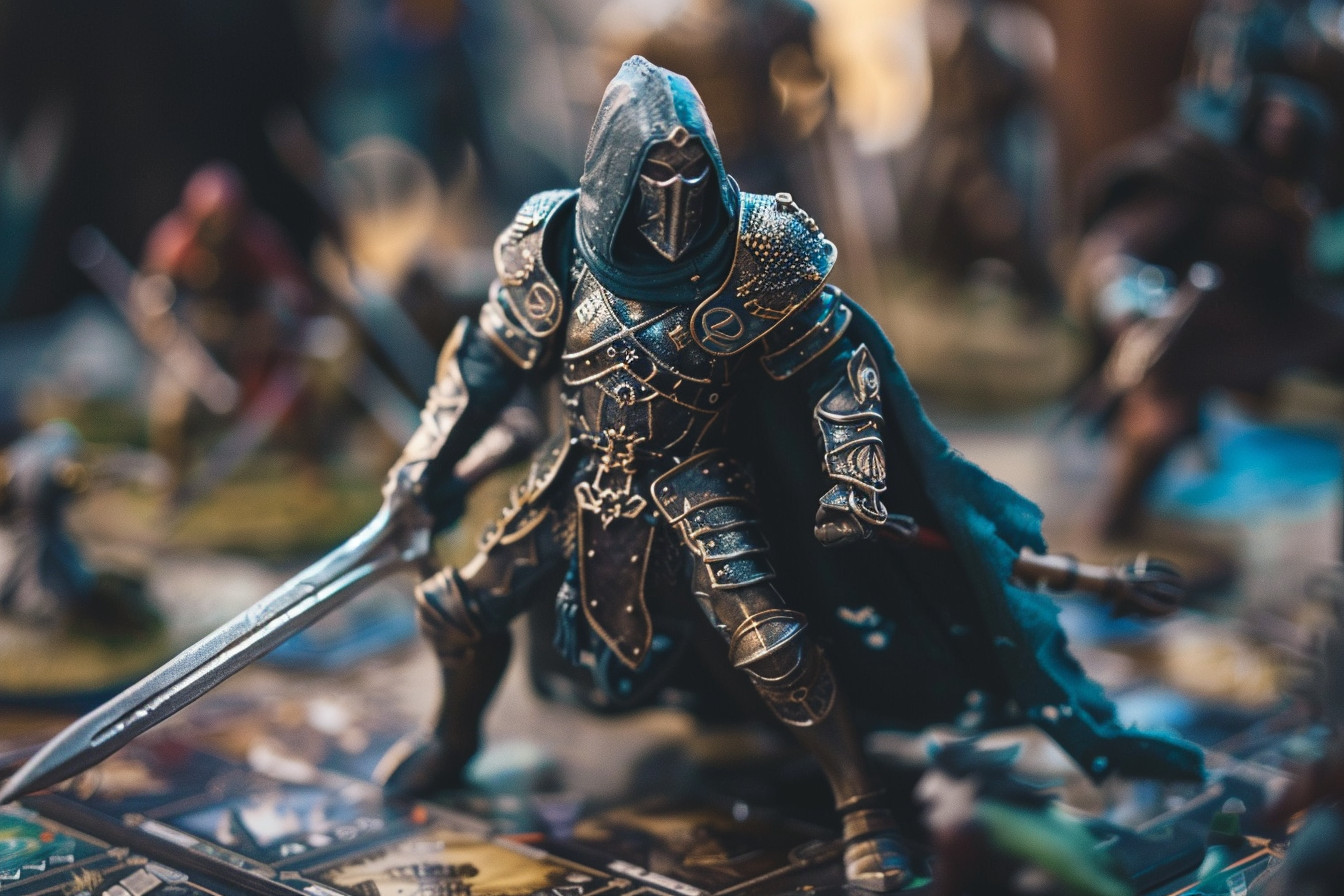A New Adventure in Tamriel
My initial reaction upon learning that the Elder Scrolls V: Skyrim was becoming a tabletop game was one of thrill and bewilderment. I could hardly believe that the magic, profound storytelling, and enthralling atmosphere of a video game that I had logged so many hours into could find its way into a board game. So I bought the board game—no review copy for me! Here’s my earnest assessment of what The Elder Scrolls V: Skyrim—The Adventure Game has to offer.
What’s Inside the Box?
The beautifully designed box that the game comes in reveals the kinds of quality you can expect from the game components. Game board, game character miniatures, and more than 800 cards for quests, items, and events make up the components of this game, along with dice and various tokens. The game setup could indeed feel like a labor of love, and for anyone just looking for a quick game to play, that would probably not be this game.
One certainly aspect of the game that is to be lauded is how detailed and immersive it feels. Everything from the character miniatures to the quest cards pulls you into the world of Tamriel, and as you set up and lay out pieces of the game, the visuals on the game board represent perfectly the kinds of gorgeous vistas and expansive landscapes that fans of Skyrim are already familiar with.
Immersive Gameplay Mechanics
The Adventure Game for The Elder Scrolls V: Skyrim is a campaign-based experience designed for 1-4 players. The campaign unfolds in a number of chapters, offering several hours’ worth of play as you traverse Skyrim, take on its inhabitants, and complete quests. The game aims to capture the video game’s depth through a combination of main quests, side missions, and character development. Its narrative structure is a big strength, allowing some freedom of choice, in true Skyrim style. And although the game places the most emphasis on the story and its telling (it even uses a “storyteller” to narrate the action), the rules cover combat and skill challenges in enough detail that players really feel like their characters are taking part in an epic adventure.
Strategic Combat and Cooperative Play
The combat in the game is simple yet strategic, using die rolls to determine the outcomes of attacks. A few different kinds of weapons and gear can adjust your basic odds and add a layer of tactical depth to the outcomes of battles, if not to the actual fighting itself. I felt like I had two basic options when it came to gameplay: using a well-thought-out, cautious approach or relying on my dice to be fortunate. Of course, those options are much like the using of light and heavy weapons—both styles can lead to victory. The game shines in cooperative mode, encouraging players to work together and use different character strengths and styles to accomplish their goals.
How It Compares to Other Board Games
Fans of the video game will find a nostalgic trip back into Tamriel, but with a different focus that emphasizes strategy, teamwork, and a slower, more deliberate pace. The board game shares similarities with adventure-based “story games” like Mansions of Madness and Fallout: The Board Game, particularly in balancing exploration with combat. What sets the Skyrim game apart is its excursions into narrative-driven quests.
Modular design allows for more flexibility in the story progression compared to other games within the same genre, like Gloomhaven, which leans heavily on combat and dungeon-crawling. Both games easily accommodate a two-hour play session, but the Skyrim game integrates “rich lore” and story elements in such a way that players have the feeling of breathing the game’s narrative rather than just living it.
Pros and Cons: What You Need to Know
- Immersive Worldbuilding: The game captures the atmosphere of Skyrim very well, from the map’s detail to the art on the quest cards. Exploring the game is almost like exploring the world of Skyrim itself.
- High Replayability: The game offers extensive replay value through branching quests and varied storylines.
- Rich Storytelling: The game draws the player in over and over again with its deep narrative structure.
- Stunning Components: The game board, miniatures, and cards are beautifully designed, making for an impressive tabletop presentation.
- Solo Play Option: The game can be played solo, providing a rewarding challenge for individual players.
Cons
- Steep Learning Curve: Be ready for a steep learning curve once you hit the rulebook, and navigate that rulebook well so you don’t confuse yourself during setup.
- Long Play Sessions: Be ready for some lengthy play sessions too, which might be a drawback for those seeking shorter games.
- Rulebook Complexity: The rulebook could use more clarity, as it can be hard to find specific details during gameplay.
- Price Point: The price of the game, and especially its expansions, commands serious attention from your bank account.
- Difficulty Balancing: The balance between easy and difficult quests can be inconsistent.

What Sets This Game Apart? The Special Aspects of Its Gameplay
1. An Experience Centered on Narrative
The game’s story stands out as a definite strength. Each campaign develops in multiple acts, and the quests within them feel plucked directly from a certain kind of video game. Players select from among the paths laid before them, and their choices influence both the world and the story in ways that lead to different outcomes in different plays. This kind of branch-and-bound narrative isn’t quite the same as an open-ended one, but it does keep players invested and keeps the experiences of different campaigns distinct.
2. Cooperative Play That Rewards Strategy
Playing with friends enhances the experience significantly. Coordinating attacks, sharing resources, and planning strategies to complete quests create a true sense of camaraderie. The game’s difficulty ramps up as players progress, making teamwork essential for success.
3. Visual and Tactile Appeal
There is no doubt that a great deal of meticulousness went into the visual aesthetics of the game. The playing board is a work of art, its richness matched only by the detailed miniatures that populate it. The cards are impressive, and the tokens are fabulous. Indeed, it is a kind of game that seems tailor-made for those who appreciate stunning art design in their tabletop games.
4. A Worthwhile Solo Experience
Don’t think of the game’s solo mode as an afterthought. It’s an option fully fleshed out for those who enjoy the challenge of going it alone. There’s an added element of unpredictability with the game’s AI-driven enemies, and you get the wonderful opportunity to take charge of not one but multiple characters.
5. Profound Character Personalization
Personalizing your character is a huge part of the allure. As you move through the narrative, you collect not just new equipment but also new abilities. These allow you to mold your character in whatever direction you want, making each playthrough unique.
Final Judgment: Who is the Target Audience for The Skyrim Board Game?
This game is a match made in heaven for fans of The Elder Scrolls series who revel in rich narratives and are willing to devote time to an expansive, easily strategic game. If you enjoy collaborative efforts that require you to think several steps ahead, and if you are intimately familiar with the deep, dark, and lucrative alleyways of Tamriel, this board game is definitely something you should consider.
If you want a hasty, informal game or if you dislike dice-driven mechanics, this game’s learning curve and length might rub you the wrong way. It’s a game that demands patience and rewards immersion, much like the original video game. But if you want to spend time with a board game that gives you as much to think about and with which to interact as its video game predecessor, The Elder Scrolls V: Skyrim – The Adventure Game is worth every minute you put into it.







